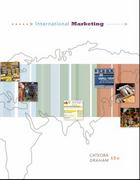Question
Case #2 WATER PRICING IN AKVO The community of Akvo is a small city in a middle-income Asian nation. The city currently provides water to
Case #2
WATER PRICING IN AKVO
The community of Akvo is a small city in a middle-income Asian nation. The city currently provides water to its citizens through a utility run by the local community. This water system serves 15,000 households. Of these, 5,000 are considered high income households and 10,000 are low income households. In addition to these 15,000 households, an additional 2,500 poor families live in neighborhoods on the edge of town that have yet to be connected to the municipal water system, and thus do not have access to water in their homes.
Currently, the price of water provided through the utility is subsidized, so that households pay just $0.3 per cubic meter (m3). Because of concerns over the high cost of this subsidy, you have been asked to evaluate alternative pricing schemes for Akvo. For both the current pricing scheme of $0.3/m3 and each of the alternatives requested below, please provide the following information:
1.
The price (or prices) necessary to meet the goal of the alternative.1
How many cubic meters will the typical low-income household consume? The typical high-income household?
What is the total water consumption for the community?
The total cost of providing water (including fixed costs)
The total revenue raised from the sale of water
The profit or loss under each option.
Alternative 1: Marginal Cost Pricing By raising the price to be as close as possible to the marginal cost of providing water services, advocates of this strategy hope to reduce the burden on the municipal budget while making water as affordable as possible.
Alternative 2: Privatization Advocates of this alternative call for turning management of the water system over to a private firm. The firm will be responsible for both the fixed costs and marginal costs of water provision. The firm will charge consumers a price for water that maximizes profits for the firm and the firm will be the only supplier of water to the population.
Alternative 3: Break-even Pricing Advocates of this alternative want to remove the cost of all subsidies from the municipal budget. They call for a price that will allow the water utility to come as close as possible to covering all of its costs, including fixed costs.
Alternative 4: Minimum Allotment
Advocates of this strategy note that the World Health Organization reports that households require a minimum of 4m3 per month for survival. They believe that any pricing strategy should guarantee at least this much consumption for each household. However, like those advocating break-even pricing, they want the utility to cover all costs, as they do not want the city to continue paying for any shortfalls.
Facts about the community:
For each of the 10,000 low-income households, demand for water is given by the equation QL =6.25 - 3.75P, where Q represents the quantity of water, measured in cubic meters, consumed permonth.
For each of the 5,000 high-income households, demand for water is given by the equation QH =62.5 - 37.5P, where Q represents the quantity of water, measured in cubic meters, consumed permonth.
The fixed costs of the water system are $35,000 per month
The marginal cost of providing water is $0.6/m3.
2. What is the explanation from an economics perspective for marginal cost pricing, privatization, break-even pricing, and minimum allotment if applied in the given case?
The following table provides information on price, quantity, marginal revenue and costs:

Step by Step Solution
There are 3 Steps involved in it
Step: 1

Get Instant Access to Expert-Tailored Solutions
See step-by-step solutions with expert insights and AI powered tools for academic success
Step: 2

Step: 3

Ace Your Homework with AI
Get the answers you need in no time with our AI-driven, step-by-step assistance
Get Started


